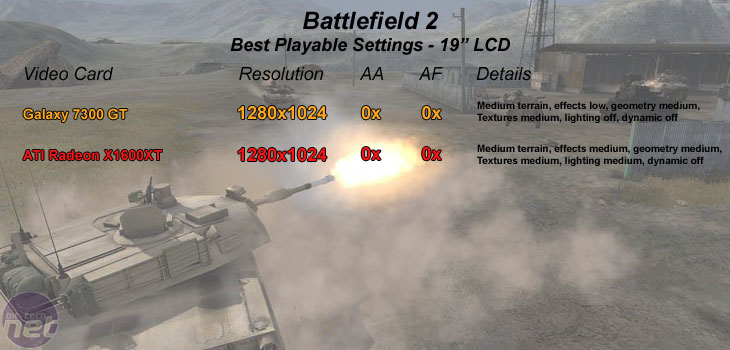Battlefield 2
Publisher: Electronic ArtsBattlefield 2 features an all-new game engine based on the DirectX 9.0 API. There is no Shader Model 3.0 support, but the majority of hardware will use a Shader Model 2.0++ mode that includes support for Normal Maps, Parallax Mapping, Full-Resolution Dynamic Shadowing, Post Processing and Fog.
The game will look the same on both NVIDIA and ATI hardware, so there is no advantage of choosing one over the other in image quality related circumstances. The only major difference is that Ultra Shadow 2 is utilised on NVIDIA's hardware, while the shadowing on ATI hardware is done using a slightly different technique.
We patched the game to version 1.3 and then played three five-minute segments of the 'Gulf of Oman' map, reporting the median frame rate. We found that there was no ready way to duplicate testing situations manually in this game, so we felt that taking a typical slice of action from the game was the best way to report our findings. We controlled anti-aliasing from inside the game, while anisotropic filtering was set to 8xAF when the 'Texture Filtering' option was set to 'High'.


We must also mention that we saw texture shimmering in this title on the Galaxy GeForce 7300 GT at the default driver settings. It's not as much of an issue as it is on a higher-end card, hence why we've stuck to using the default quality settings. This is because the end user is prepared to make compromises when they're not spending a lot of money on their video card.

MSI MPG Velox 100R Chassis Review
October 14 2021 | 15:04








Want to comment? Please log in.